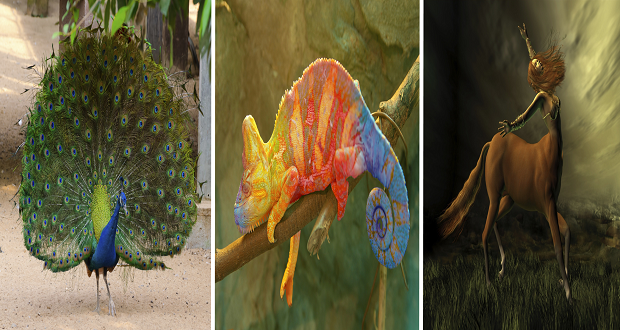
I just finished a great book by sociologist, Wayne Brekhus titled Peacocks, Chameleons, Centaurs: Gay Suburbia and the Grammar of Social Identity. Although Brekhus is making a somewhat complex theoretical argument about identity formation, I found it accessible and filled with a spirit to “teach.” The book is especially relevant given the recent Inclusion Solution posts on multiple identities and the importance for understanding them.
I wanted to spend a few posts highlighting some of the key themes of the book for you with hopes of spurring further dialogue about the complexity of our identities and identity commitments. I also found that the conclusions of the book directly paralleled the work of diversity and inclusion in general, and the concepts from the Intercultural Development Inventory® (IDI®) specifically. The IDI® is a quantitative based tool for measuring ones intercultural competence. Individuals take the assessment, which places them along a continuum that measures their particular orientation to cultural commonality and difference. The five orientations (denial, polarization, minimization, acceptance, and adaptation) are not only ways of dealing with culture, but in some respects come out of corresponding identities.
Brekhus builds a theory of identity around three main “ideal” tropes that symbolize major ways people perform their identity: Peacocks (lifestylers), Chameleons (commuters) and Centaurs (integrators). Although he does this by examining gay communities in the suburbs, he intends for these categories to be applied to understanding identities across all dimensions (race, gender, class, religion etc.).
Peacocks, or “lifestylers” are those who have a high-density commitment to a singular identity that is marked by expressive behaviors and a passion for keeping their identity boundaries “pure.” Like peacocks, these individuals must constantly “show off” their identity in order to keep it intact and visible for those around them. Lifestylers feel a very deep connection one primary identity and that commitment trumps any other identities they may have. Various foods, clothing, language, and how and where one spends their time are all ways that Peacocks show their identity feathers. In terms of cultural competency and the IDI® continuum, these are folks who feel a deep sense of cultural “engagement” and tend to see the world from a polarization perspective; identity is neatly separated in terms of “us” and “them”.
Brekhus’s second ideal category of identity is Chameleons or commuters. Like Peacocks, Chameleons also share a deep connection to their identity and are adept at “turning” them off or on depending on context. This is why he uses “commuter” as synonymous because these individuals compartmentalize their identities for different times and places. Brekhus uses the example of gay men who live in the suburbs and express their sexuality more “quietly” during the workweek, but commute to big cities or gay festivals to “turn up” certain aspects of their gay identity in appropriate contexts. The same could be said for Christians who heighten their religious identity during holidays or Sundays but play up another identity during the week or throughout the year. Chameleons take pride in being able to express various identities depending on their context without allowing a single identity define them. In terms of the IDI® orientations, Chameleons tend to “minimize” their primary identity most of the time, but overemphasize their identity some of the time.
The third identity type is Centaurs (integrators). Unlike Chameleons who “commute” between two strongly held identities, Centaurs tend to blend and adopt several identities together so that the boundaries between them are blurred or non-existent. In Brekhus’ study, these were gay suburban men who did not want their sexuality to primarily define them (like Peacocks), but instead wanted to live and be seen as “normal” everyday people like their suburban neighbors around them. Centaurs value the ability to shift seamlessly between many different identities as opposed to strongly expressing one or two. They would much rather be defined by their “humanity” more broadly, than any one identity specifically. Again to relate this to the IDI® continuum, this is similar to the acceptance/adaptation orientations in that there is a deep appreciation of multiple identities as well as a desire to adapt and blend-in without distinguishing oneself too much.


















